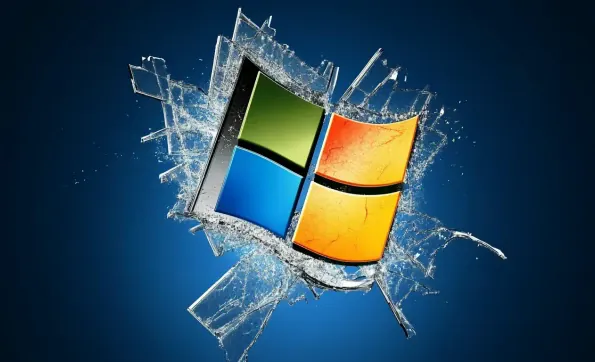A critical security vulnerability in Microsoft Windows’ handling of Link (LNK) files has come to the forefront, shedding light on a severe cybersecurity issue. The flaw has been discovered to enable malicious actors to embed harmful payloads within seemingly benign LNK files, making them a tool for executing arbitrary and potentially dangerous code. The invisibility of this flaw to end-users even on file inspection compounds the threat. Users often rely on visual cues to identify the integrity of files, and this sophisticated manipulation bypasses those defenses, exposing a vast number of systems to potential compromise.
Weaponizing Windows LNK Files
Trend Micro’s findings reveal how state-sponsored hacking groups from countries like North Korea, Iran, Russia, and China are leveraging this flaw to carry out campaigns focused on espionage and data theft. By manipulating the LNK files, these actors can effectively mask their intentions, making detection extremely challenging. The exploitation involves embedding command line arguments within LNK files, thus executing malicious payloads without raising red flags. This exploitation of LNK files is not only sophisticated but also widespread, making it a pernicious method for cyber-intrusions.
Such manipulation of LNK files means that even vigilant users are at risk. When end-users open these corrupted files, malicious code runs without their knowledge or consent. This technique allows attackers unprecedented access to systems, enabling them to gather sensitive information or gain control of critical infrastructures. The complexity of this method, where standard visual examination of files proves futile, marks a notable escalation in cyber warfare tactics. The cybersecurity community has characterized these actions as both insidious and highly effective, illustrating the growing sophistication of state-sponsored cyber operations.
Magnitude and Geographic Spread
Over 1,000 malicious LNK files have been identified, hinting at an extensive exploitation strategy. A significant portion of these samples were reported from the US, pointing to a broad geographic spread. Alarmingly, the largest detected sample was a hefty 55.16 MB, indicating the scale and sophistication of these attacks. Advanced techniques employed in these files signify a calculated approach to evading detection and maximizing the impact of the malicious code. This calls for an immediate and heightened vigilance across all sectors, particularly those related to national security and financial operations.
The statistics highlight that nearly 70% of these nefarious activities are driven by goals of espionage and data theft, with financial gain accounting for over 20%. This indicates a dual-headed threat, targeting both sensitive information and monetary assets. The dual nature of these attacks adds layers of complexity to potential responses, necessitating a multifaceted approach to cybersecurity. It underscores the importance of international cooperation and rigorous protective measures across various industries. The real and present danger of this vulnerability cannot be understated, as the repercussions of these attacks extend far beyond immediate financial losses.
State-Sponsored Threat Landscape
The bulk of these sinister campaigns is the handiwork of state-sponsored groups, particularly from Russia and North Korea. Prominent groups like Evil Corp, Kimsuky, and Earth Imp have been active in exploiting this vulnerability, with the North Korean factions showing polished coordination. Their combined efforts and shared techniques highlight a concerted global strategy aimed at compromising critical infrastructure, government entities, and financial institutions. The expertise and resources at their disposal enable these groups to execute highly precise and impactful operations, leaving targeted organizations scrambling to defend against these advanced threats.
The collaborations among these groups signify a well-orchestrated effort, especially targeting government bodies, the financial sector, and telecommunications. Their advanced techniques and shared methodologies underscore the formidable nature of this threat. These alliances also demonstrate a concerning trend of information exchange and cooperative attacking strategies, further complicating defensive measures. With shared knowledge, these state-sponsored actors continually refine their methods, staying one step ahead of traditional cybersecurity defenses. The growing frequency and sophistication of these attacks represent a clear escalation in the cyber warfare landscape.
Microsoft’s Response and Controversy
Trend Zero Day Initiative (ZDI) reported the LNK file vulnerability to Microsoft in September 2024. However, Microsoft determined that the issue did not warrant an immediate patch, a stance that has provoked concern within the cybersecurity community. This decision has sparked a heated debate, as the consensus among researchers is that the flaw presents a significant risk. The delay in releasing a patch has been seen as a potential oversight, allowing threat actors to continue exploiting the vulnerability. This scenario highlights the critical balance between assessing the severity of risks and the imperative need for timely security updates.
Despite multiple interactions and warnings from ZDI about going public due to the lack of action, Microsoft has remained firm in its position. This disagreement on the vulnerability’s severity presents a major concern for those in the cybersecurity domain. The lack of immediate corrective measures demonstrates a gap in risk perception between developers and the cybersecurity community. As the debate continues, the potential consequences of delayed action become more pronounced, emphasizing the need for more agile and responsive risk management practices. This situation brings to light the importance of collaborative efforts in addressing emerging cyber threats swiftly and decisively.
Proactive Mitigation and Security Measures
A significant security flaw in Microsoft Windows’ handling of Link (LNK) files has recently been exposed, highlighting a major cybersecurity risk. This vulnerability permits cybercriminals to embed harmful code within seemingly harmless LNK files, transforming them into tools for executing arbitrary and potentially harmful actions. What makes this threat even more alarming is that it remains invisible to users, even upon file inspection. Typically, users count on visual cues to verify the integrity of their files, but this sophisticated exploit circumvents those defenses, leaving numerous systems at risk. The insidious nature of this vulnerability means that users are highly susceptible to attacks without any apparent warning. To safeguard systems, it is imperative that users remain vigilant and update their security protocols to detect and mitigate such threats. This issue underscores the ongoing need for robust cybersecurity measures and constant vigilance in protecting digital assets against ever-evolving threats.













